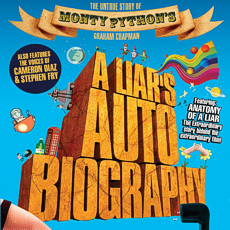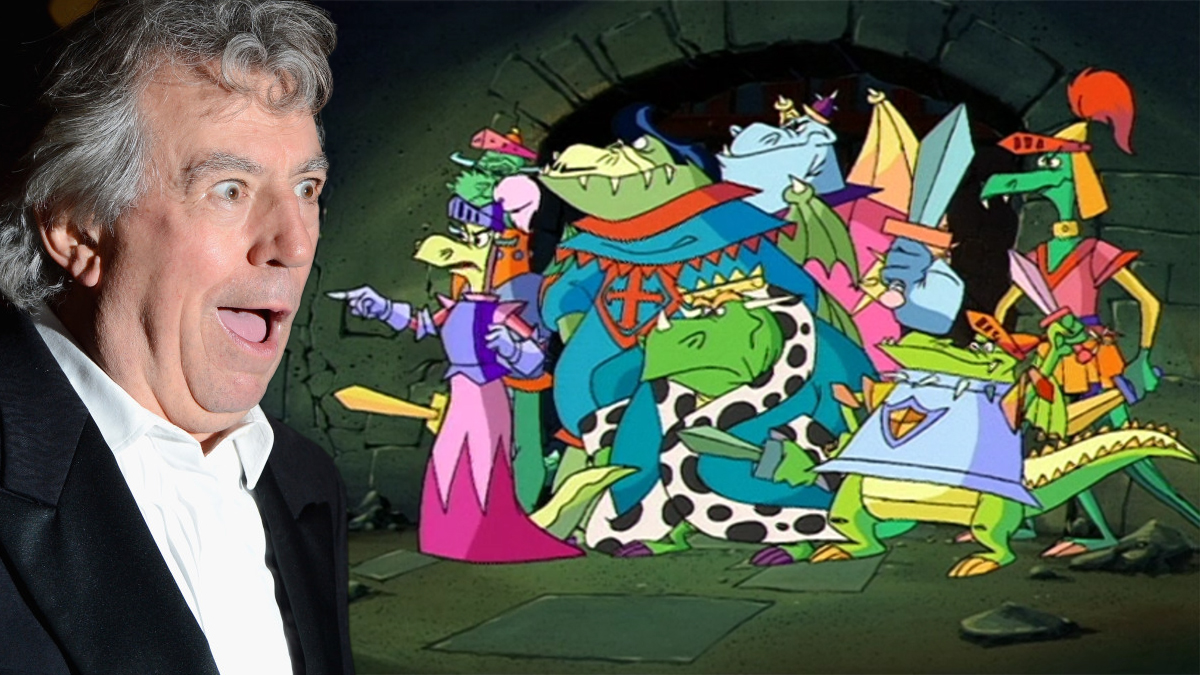Brainstorm Media/Epix/Virgil Films/Trinity (October 16 2012), Brainstorm/Virgil (February 12 2013), single disc, 85 mins plus supplements, 1.78:1 anamorphic widescreen, Dolby Digital 5.1, Rated R, Retail: $24.99
Storyboard:
The life, some of it true, most of it embellished, of Monty Python’s Graham Chapman is told through the use of his autobiographical audiobook recordings and several different animation methods to create a unique biopic.

The Sweatbox Review:
The Monty Python troupe just hasn’t been the same since that “freeloader” (John Cleese’s description!) Graham Chapman went and died in 1989. It could be argued that the team (comprised, of course, of Chapman, Cleese, Michael Palin, Eric Idle and Terrys Gilliam and Jones) had been moribund since their last hurrah, the very underrated (even by the Pythons themselves, but especially good in its originally longer workprint version) The Meaning Of Life in 1983, a theatrical movie that came full circle to return at the sketch format of their initial and most famous success, the Monty Python’s Flying Circus television series.
Banding together as a result of being influenced by post-war comedy such as Peter Sellers and Spike Milligan’s The Goons, the Pythons had worked or known of each other throughout the 1960s on various topical comedy shows such as At Last, The 1948 Show and Do Not Adjust Your Set, before the Flying Circus and later live appearances took off in Britain and the US. A natural segue into film followed, initially transposing their TV sketches to the big screen for And Now For Something Completely Different and the live account of their smash stage show Monty Python Live At The Hollywood Bowl.
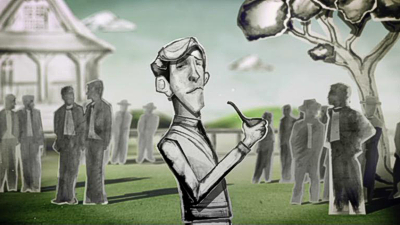
“Proper” movies followed, such as the hysterical (and hysterically oft-quoted) Monty Python And The Holy Grail and ridiculously controversial Life Of Brian, during which the group found other success in separate venues, not least Cleese’s crowning glory in the Fawlty Towers series and Gilliam’s transfer from animator to major movie director (Jabberwocky, Time Bandits, Brazil, The Adventures Of Baron Munchausen, 12 Monkeys and The Imaginarium Of Doctor Parnassus, to pick a few) – not bad by anyone’s standards!
With The Meaning Of Life very much feeling like a conclusion to their Pythoning, their separate projects became more of a priority for them, although they did continue to pop up and assist with each others’ movie projects. A final appearance as a group came at the end – for one short shot only – of Steve Martin’s twentieth anniversary compilation Parrot Sketch Not Included, and mere months later, Chapman had died. The Pythons did continue to come together for one off projects, such as a retrospective (where Chapman was represented by what was purported to be his ashes) and some new thirtieth anniversary material, with the fortieth birthday marked more recently by the extensive documentary Monty Python: Almost The Truth.

New Python projects have appeared over the years: there was a long-time-ago video game, The Quest For The Holy Grail, and merchandise continues to bear the Python brand, with Eric Idle’s musical editions of Holy Grail and Life Of Brian, the brilliant Spamalot and Not The Messiah receiving rapturous acclaim and applause on the West End and Broadway stage, and in a one-off celebratory performance at the Royal Albert Hall, respectively. However, the onus has often been centered on just one or a few members of this exclusive club, with arguably Cleese and Idle being the more prolific and recognisable preservers of the Python flame.
As a result, although undeniably because he also had the insensitivity and not very good idea of dying, poor old Graham Chapman has been mostly overlooked…until now. Taking the recordings he produced for an ultimately unreleased audiobook reading of his autobiography, Chapman’s life story has been accompanied by Python-styled animations to create a unique kind of film. I can think of a handful of such feature-length documentaries that have used archival interviews and footage to recreate a person’s life as close to through their eyes as possible, but this is the first time that I can think of that completely new visuals have been conjured up to compliment a specific retelling of someone’s life by that very person.
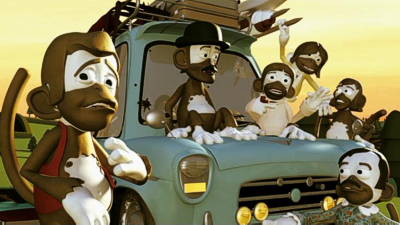
Even more enticing to Python fans will be the fact that four other surviving Pythons (Cleese, Palin, Gilliam and Jones, plus “seventh Python” – and only recurring female member – Carol Cleveland) have lent their blessing to the project, coming in to record new character lines and play themselves and others when Chapman would recount conversations they had had back in the day. Eric Idle was unable or chose not to participate, for unknown reasons, but he doesn’t go missing here, being seen and heard from other sources and not really feeling absent as such…but this isn’t really a “new” Monty Python movie as some other reviews and even the advertising materials might even hint or suggest…
In fact, A Liar’s Autobiography is actually pretty intense; a raw portrayal of a fairly crazy and mixed up guy. At times, not at all shying away from and dealing with Chapman’s homosexuality and alcoholism head on like a couple of oil tankers on a collision course, the film can be very harrowing, not least when Chapman finally resolves to clean himself up and go cold turkey, in a sequence that very much puts the viewer into that state of mind visually. This is a very powerful, emotional and hard moment to watch, and extremely well crafted, but the rest of the movie can be a bit of a mixed bag, despite a good few other stand-out moments, including the use of one or two Python songs such as Sit On My Face And Tell Me That You Love Me, revisited here as legitimate additions to the Python canon.
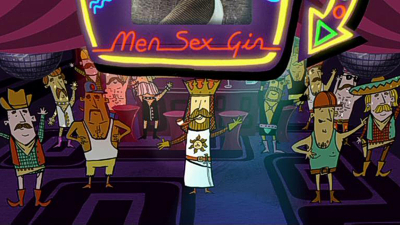
Not known for always telling the truth when an elaborately embellished version would do, we’re not one hundred percent sure if what we’re being told and show is what happened, or what Chapman would like us to think is what happened. Without some kind of anchoring in reality, I think one has to have at least a general knowledge of the Pythons and this particular contributor to grasp an understanding of the timeframe-hopping about and rough chronological idea of when and where some of the events depicted actually happened. The result can be enjoyable, with even a few real belly laughs thrown in, but those coming to A Liar’s Autobiography to learn about Chapman will no doubt be confused.
Using, as its starting point (and with strong language from the start), a moment when Graham dries up mid-sketch during a mid-1970s Python performance, the film then falls into a series of flashbacks, for which a variety of animation styles, from manipulated cut-outs through stop-motion, hand-drawn, CG and even oil-painted frames, come into effect to depict each time period and, at times, Chapman’s flights of fancy, seamlessly integrated into one another. Thematic elements concerning sex, boobs, more sex, alcohol and substance abuse, language and even more sex abound, sometimes amusingly, and often the visuals bring about an extra level of the absurd that Graham’s commentary only hints at.
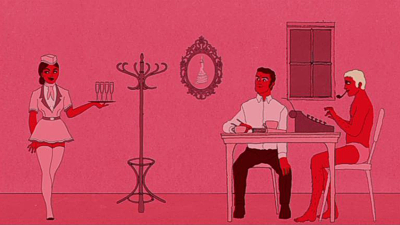
Visually the film remains engrossing throughout – whatever the medium there’s a certain feel to the timing that can only be described as Gilliamesque that is totally in keeping with Chapman’s recording and the light air of this being Python endorsed – but structurally and audibly it does sometimes struggle to retain interest or entertainment factor. There’s also the question of what Chapman leans on as significant moments in his life: those hoping for any kind of his real insights into the forming of Monty Python will be disappointed – although Cleese is simply hilarious in pulling off the perfect pastiche of their long-time producer supporter David Frost.
The hap-hazard nature can only be expected from someone such as Chapman, but with some recollections being hazier than others, and by turns other memories being pin-sharp in their detail, one never really knows what is true, what is embellished and what is out and out lies (clue: it’s in the title). There isn’t an emphasis on highlights or lowlights either, even if there’s something of a self-preservation need to steer away from failures: as mentioned, Python slides by without much consideration, and there’s much on Graham’s sometimes more tragic aspects, but his grand folly, the movie Yellowbeard goes completely unmentioned. As such, A Liar’s Autobiography is mostly a visually interesting, potentially intriguing but ultimately frustrating watch.

I was readily prepared for A Liar’s Autobiography: The Untrue Story Of Monty Python’s Graham Chapman not to be a Python-type film in any way, but the animation styles and voices keep pulling it back towards that, even though I kept thinking how un-Python the whole endeavor seemed to feel. The timing of the vocal performances perhaps belies the fact that Chapman isn’t in the same room, or that the vocalists don’t quite have the youth and energy they once did. Although this is a unique documentary-cum-comedy-cum-animation film, the strands – and this, of course, may also be the point – don’t always mesh together cohesively enough. For all the analysis, role-playing and exposing of Chapman’s good and bad sides, I never really felt I got to know an obviously extraordinary man. And that, sadly, is the honest truth.
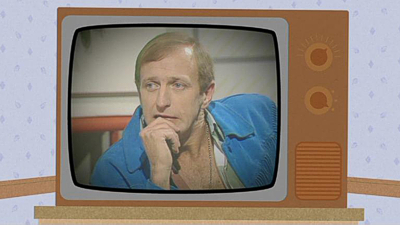
Is This Thing Loaded?
Now this is a little more like it: topping the list of not insubstantial extras is the excellent 47 minute documentary Anatomy Of A Liar. Kickstarting with footage from a commemorative event at Chapman’s favorite British “pub” bar in London from just last year (an event to which I regret not being able to attend even though I received an invitation, and now wish I had been more bullish in clearing my diary for!), this insightful look tells the true(er) story of Chapman’s life and the path toward marrying up his audiobook recordings to the animation produced to create the new movie, as well as how Python fan Cameron Diaz landed the role of Seigmund Freud for one sequence!

Narrated by Paul Gambaccini and with contributions from all the Pythons but Idle, the documentary makes for a fine tribute, featuring more Python moments, home movie footage and intimate interviews with Graham’s partner David Sherlock and others that collaborated with Chapman over the years, illustrated with clips from the movie and suggesting what might have been embellished or not. Four Behind The Scenes clips explore the production further, and especially good are André Sound: The Sound Design and a Making-Of With The Animators, which delve into the audio and visual aspects of the film quite nicely in their four and five minutes, respectively, while another examines the perfect size of a cartoon bison’s private parts.

A Comic Con clip of around four minutes screens footage from the New York edition of the fan convention, during which the movie was announced and the audience partake in a mass-singalong version of Sit On My Face, while the Terry And Mike Voice Over Session and Terry Gilliam Voice Over Session clips have Pythons Jones and Palin delivering their lines in the first, and Gilliam (in clean and foul versions) having fun behind the mic in the second, for an additional near ten minutes’ worth of material. Finally, a two and a half minute Theatrical Trailer manages to sell this most unusual film in a persuasive way, not overly leaning on the Python name even though the style is prominent.

It’s something of a shame that the US isn’t being treated to the same wealth of extras, or even format, as to be found on the film’s native UK edition, where a deluxe Blu-ray package offers a hi-def transfer, naturally, in flat and 3D options, plus two full-length audio commentaries (one with Chapman, “even though he’s dead”, as the cover states), deleted and alternate scenes and what looks to be a mix of the same and additional behind the scenes content. Why the US doesn’t get that choice – especially the option of a HD release – is a mystery, however good this presentation is, given that all the previous hi-def available Python material is mostly out on Blu-ray.

Case Study:
A basic DVD case holds the sleeve, which is created in very Pythonesque fashion and proclaiming the movie to be “the best film I have been in since I died – Graham Chapman”, the full subtitle of the film and the participation of the rest of the troupe leaning heavily on promoting the Python connections. To its credit, the back of the sleeve does point out what kind of film to expect (“not a documentary, not a Monty Python film”), but does confirm it as a “comedy” which, like the film itself, is not exactly true. The now-standard Life Of Brian-styled rock-sculpted title treatment is pleasingly recreated on the disc face; unlike the UK release there is no slipcover or inserts inside.
Ink And Paint:
Created in HD, it’s a little odd that the US has not been given the option of a Blu-ray edition of as has been done in the UK and elsewhere (and even with a 3D option, although I can’t help but feel that process would have brought anything to this other than to show up the layered animation, even if there is some fun with a couple of props being thrown out of the screen). Recent Python programs (Not The Messiah, Almost The Truth) have been issued in BD, so perhaps it’s an odd distributor decision? Whatever, the images here are expectedly sharp and look fine for good old standard definition; if anything this is probably the best SD picture quality I’ve seen in a long while which says as much about the good compression job as anything. HD would have been nice (and preferred), but this’ll do.

Scratch Tracks:
Given carte blanche to use what they wanted of Chapman’s pristine audio recordings, as well as recreating conversations with the surviving Pythons and having them and other associated members lay down tracks for new character voices, long-time Python sound designer Andre Jacquemin serves up a typical soundtrack bursting with audio life and additional spot gags. The disc’s 5.1 surround mix preserves things nicely, with the combination of new and archival sound and music (including the over-the-top Sit On My Face) switching seamlessly between the two. There are unfortunately no subtitles, but I guess one could always read the book (and perhaps even get more out of it).
Final Cut:
As the packaging notes, this is not a documentary and not a Python film, but it does merge elements of the two into something, well, pretty indescribable! Interesting to say the least, A Liar’s Autobiography successfully combines a dead person’s vocals with new and alive visuals to create something unique, if not an end result that can really stand alongside other Python projects even from more recent times. There are good elements in here, but fans may be just as baffled as newcomers, who I’m guessing just won’t be able to plug into it. The disc presentation is as good as required for DVD, although my advice here is really to rent it and, if it’s a good fit for you, go multi-region to pick up the UK edition, which also comes in Blu-ray flavor with the additional extras.
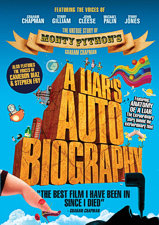 | ||
 |


